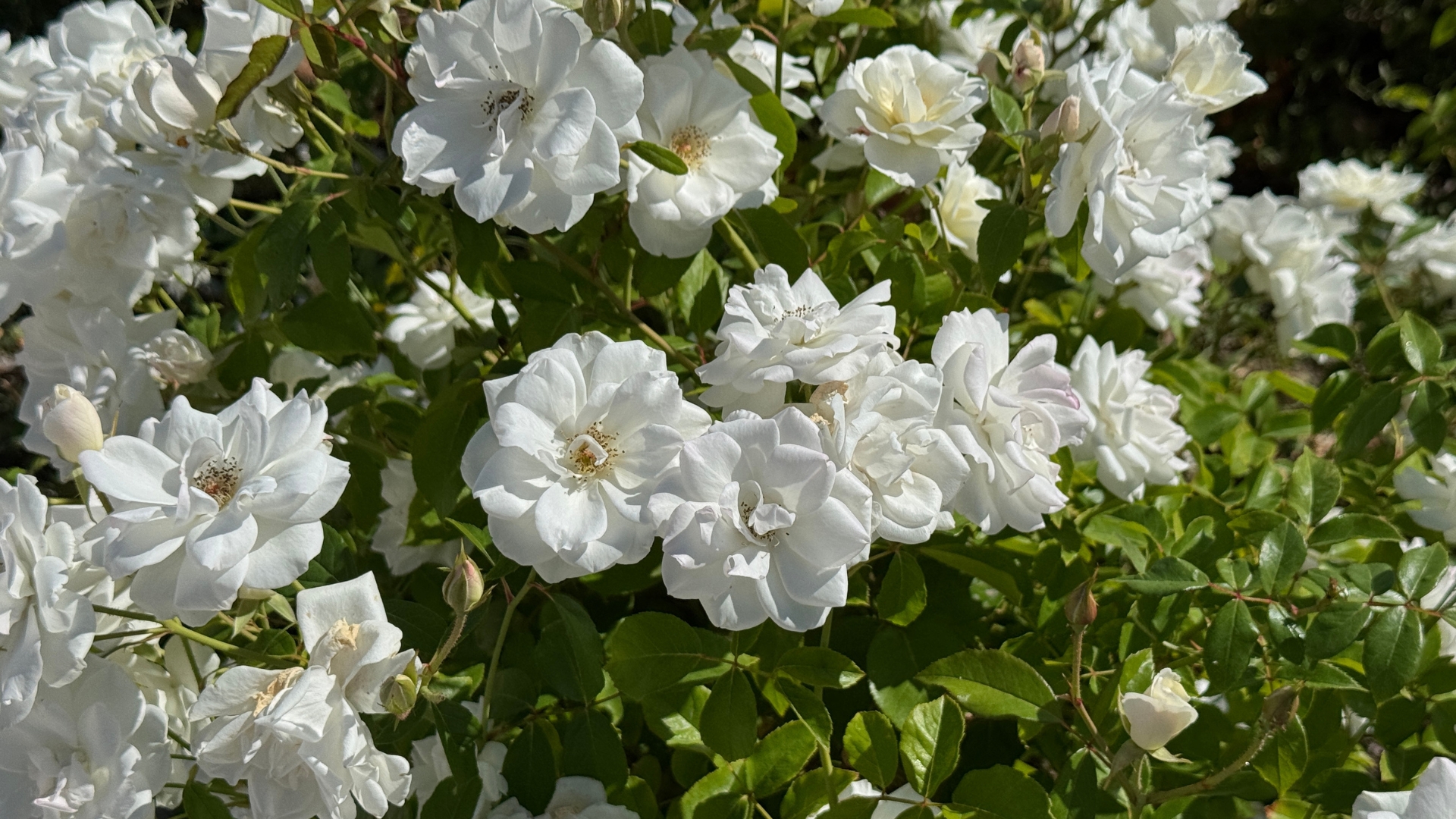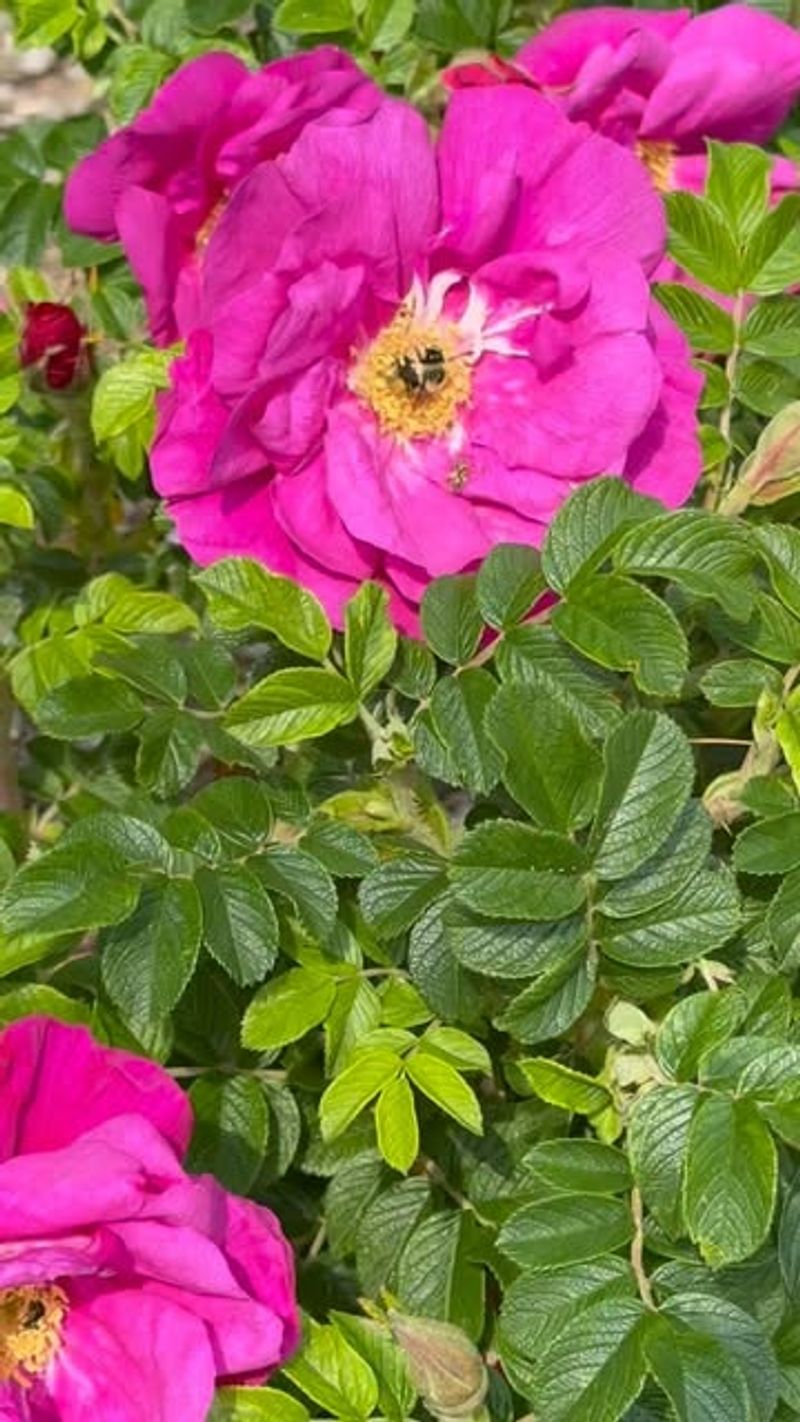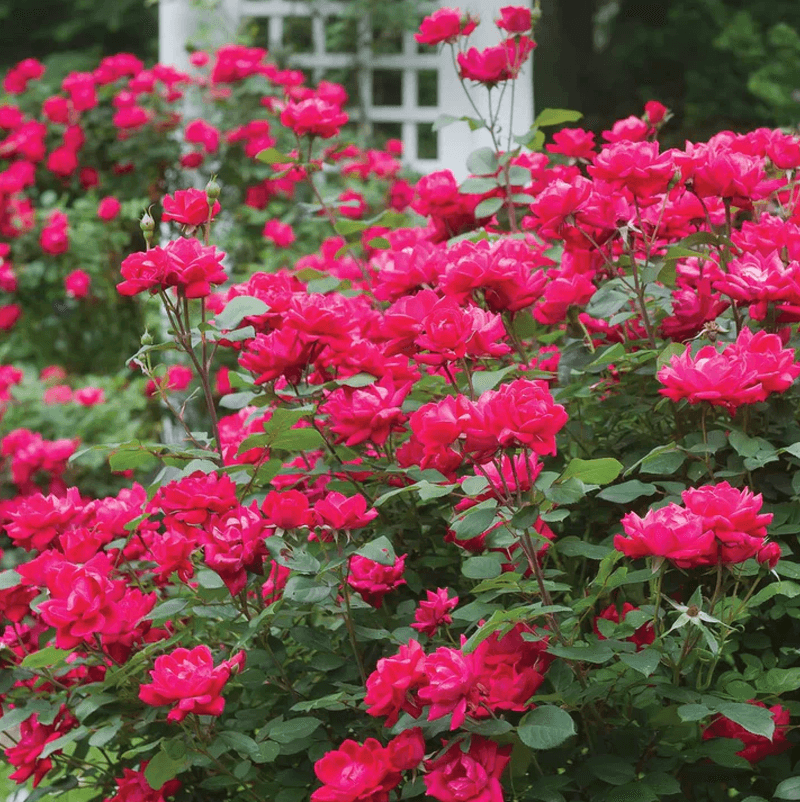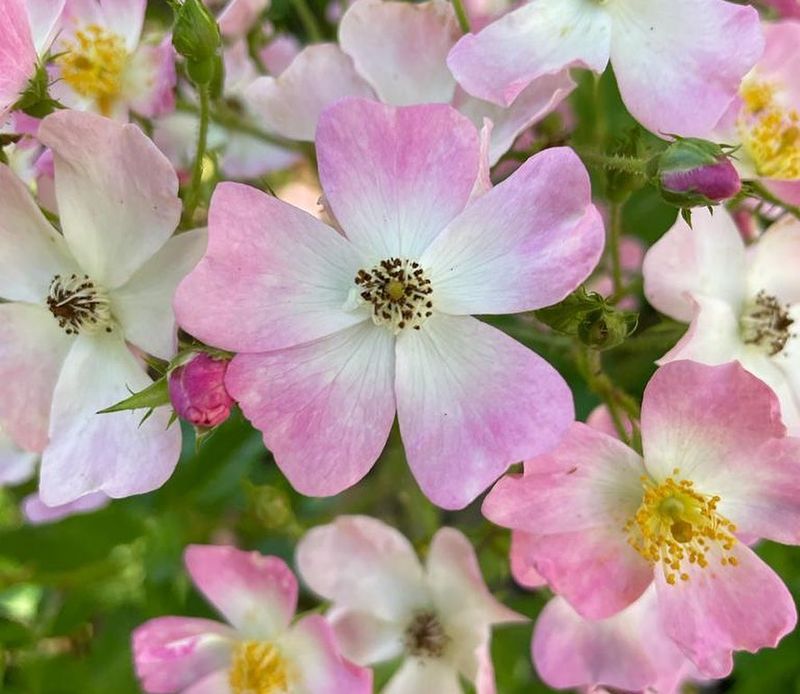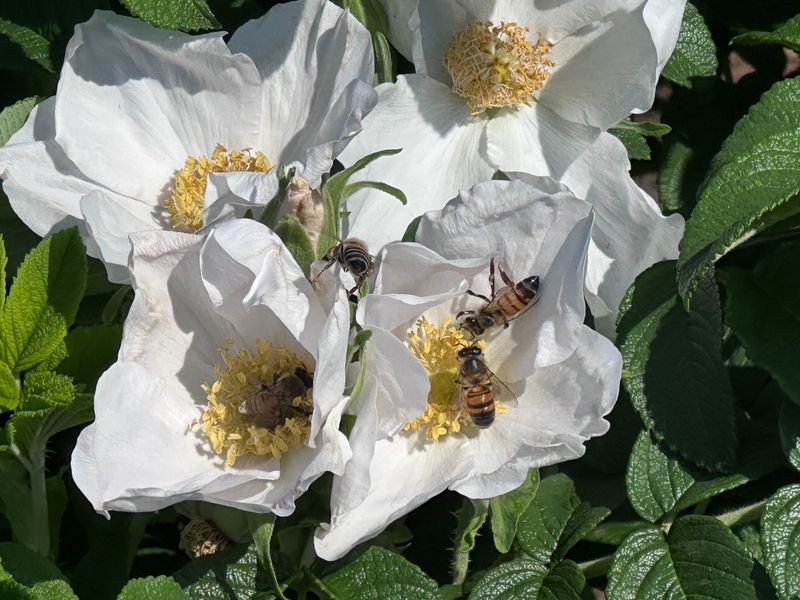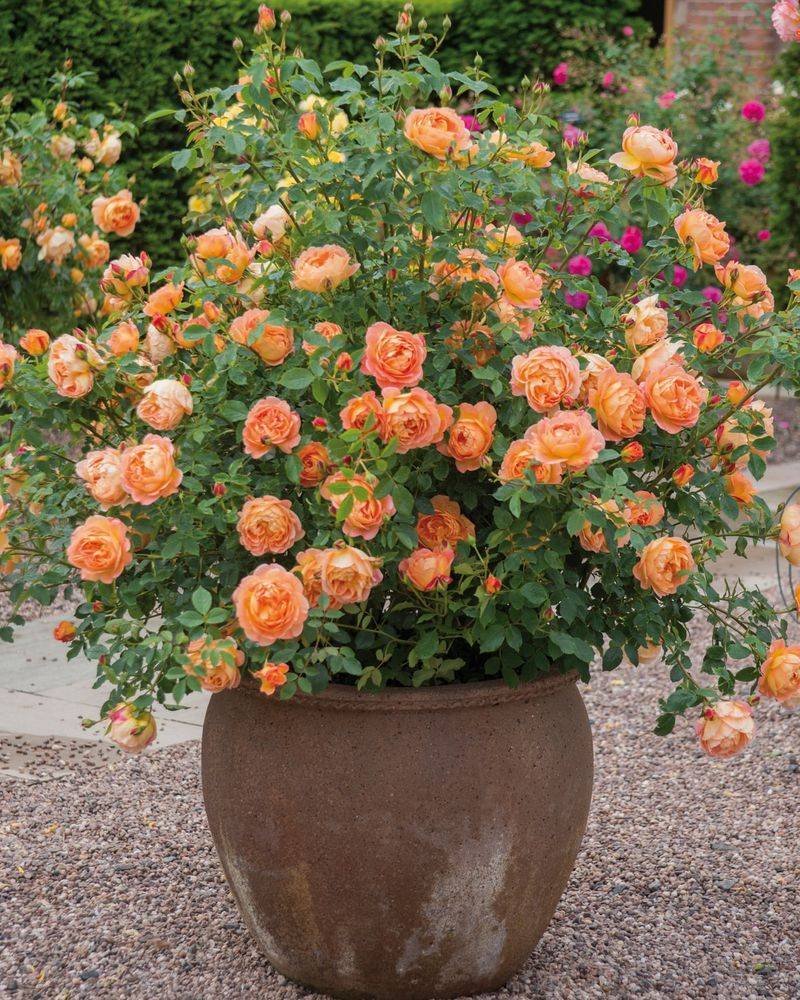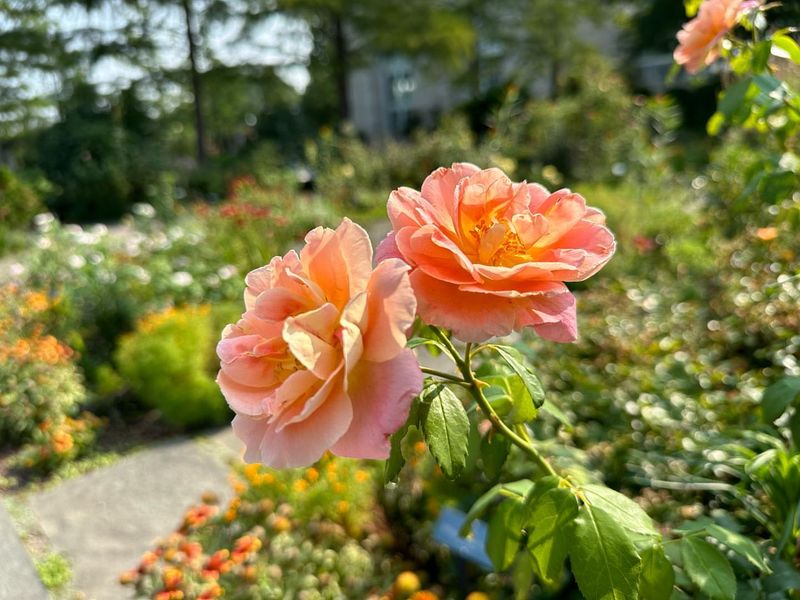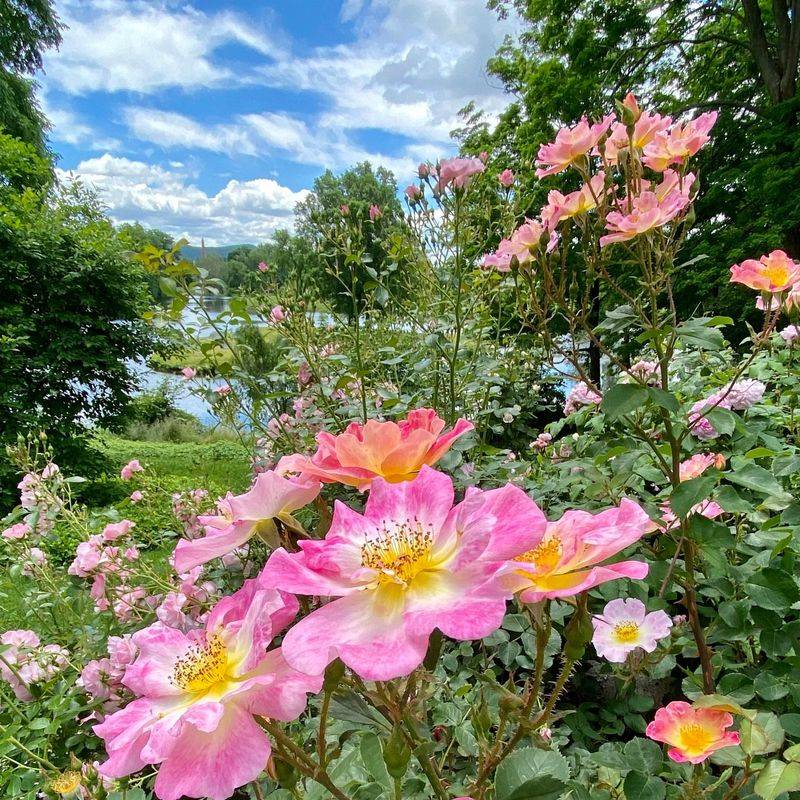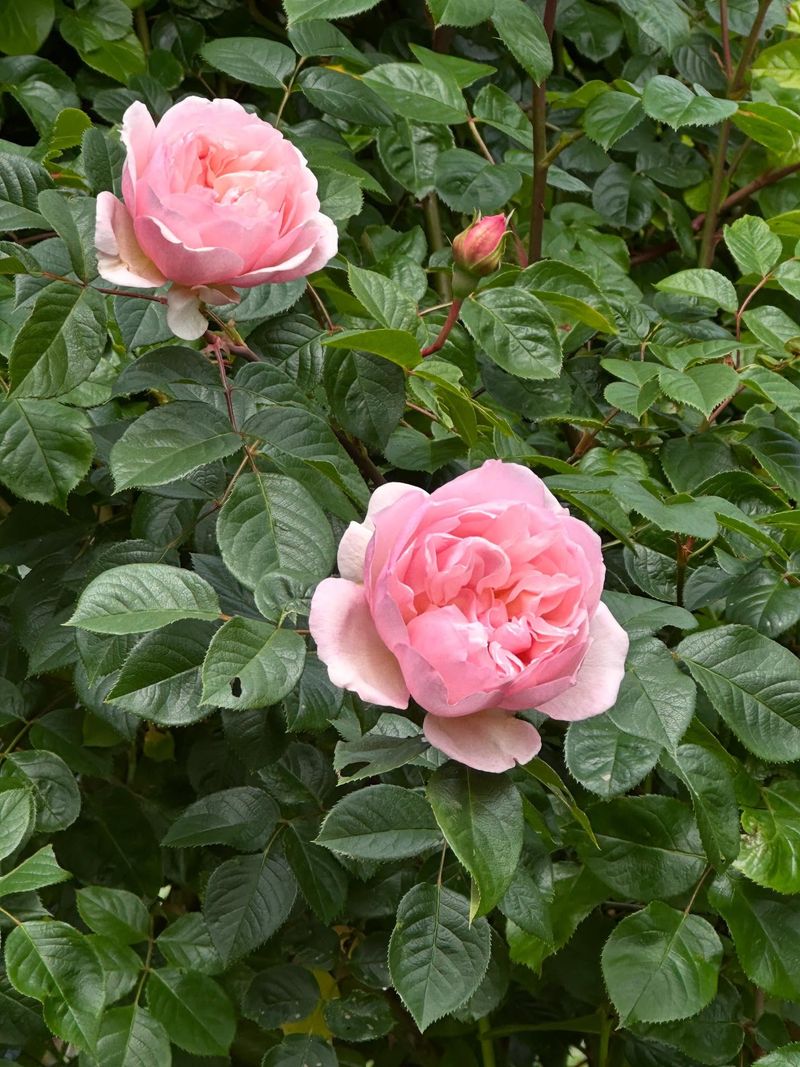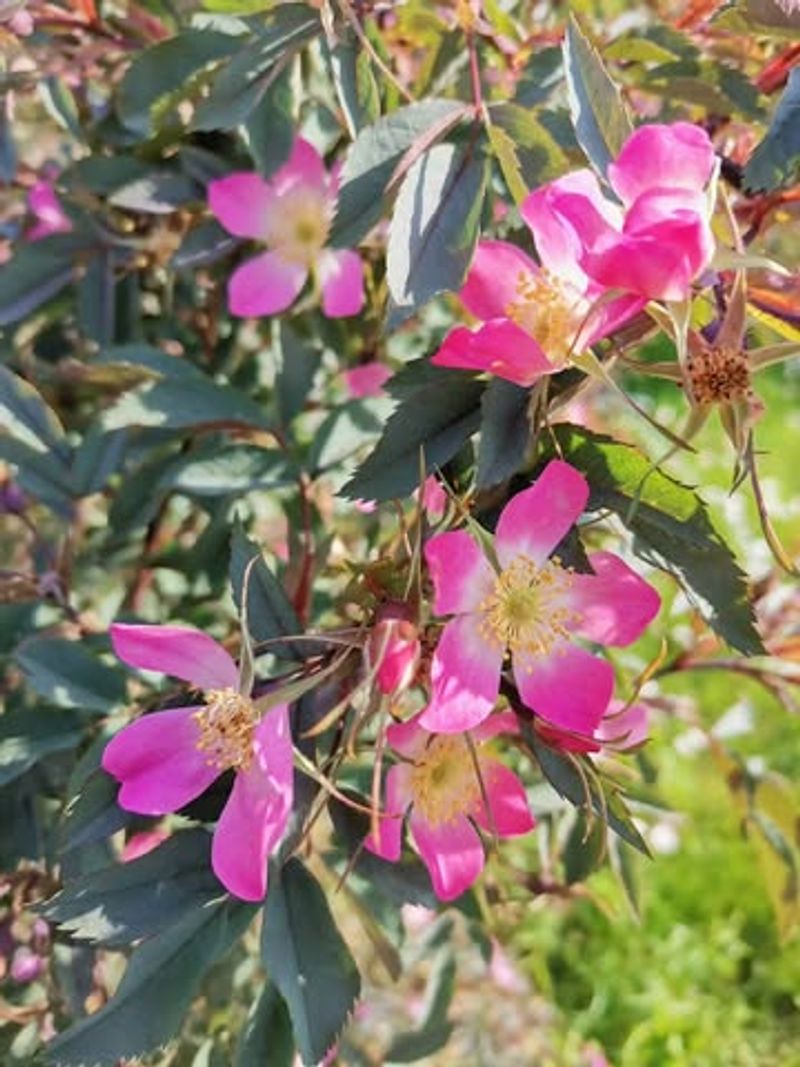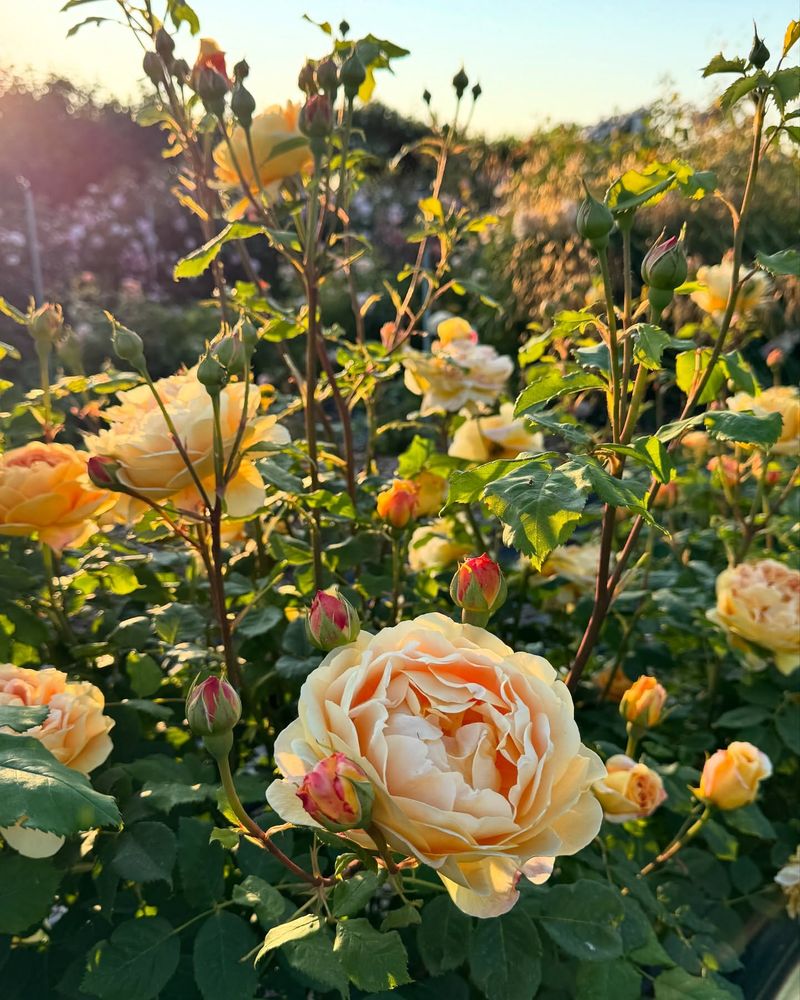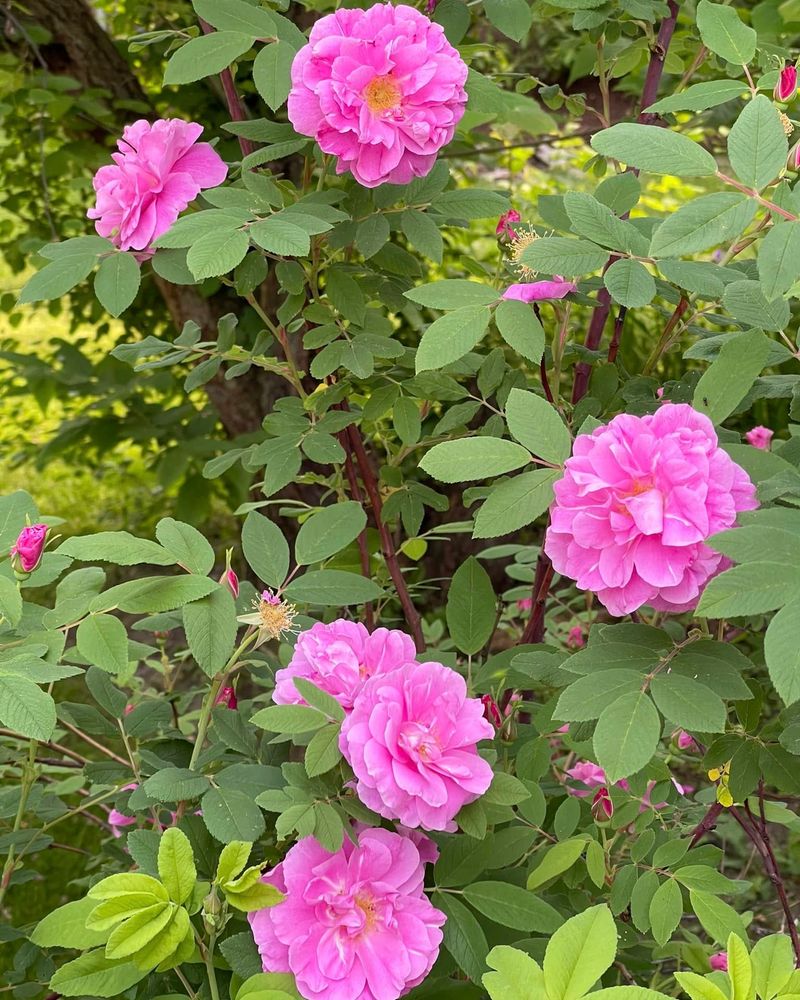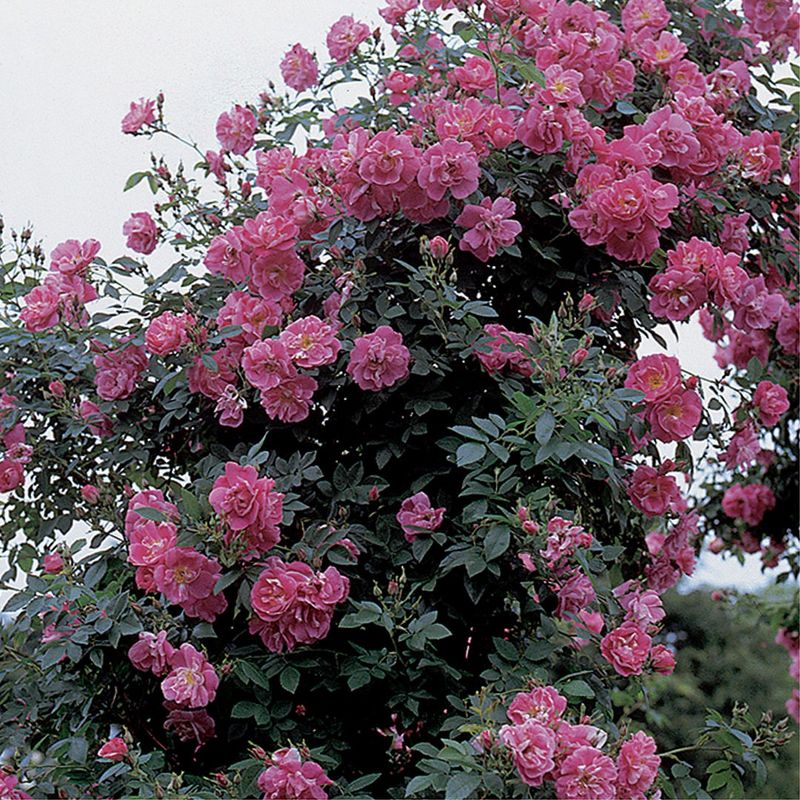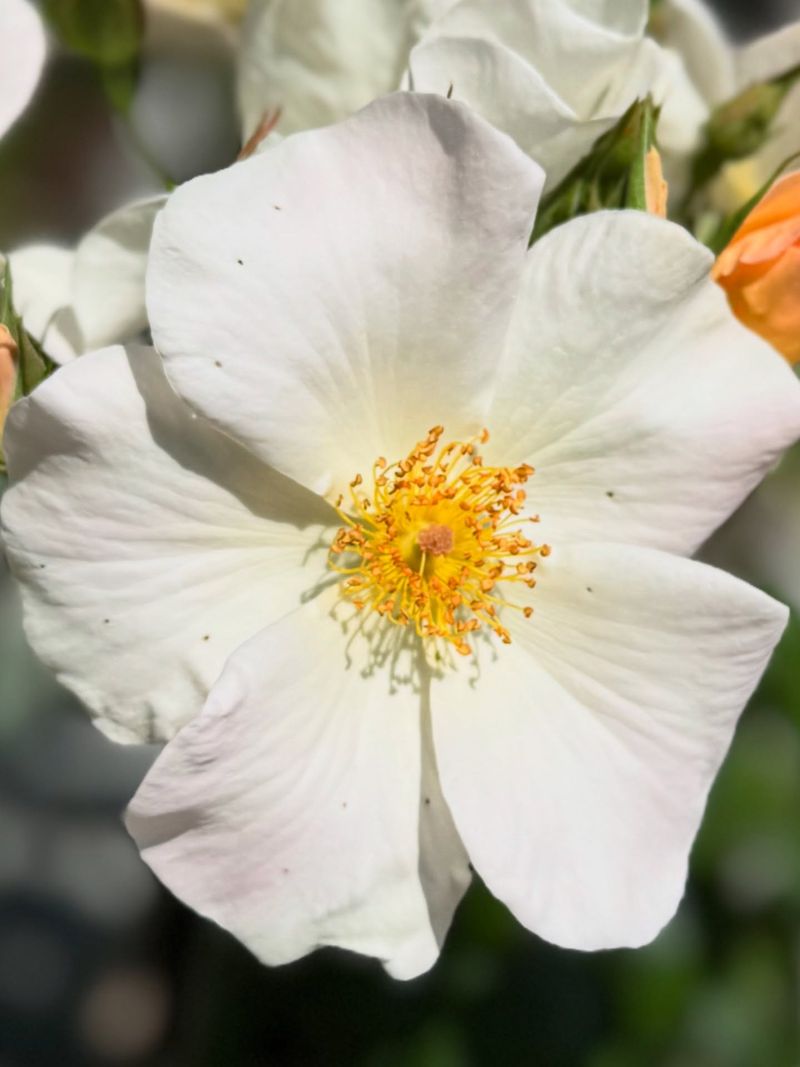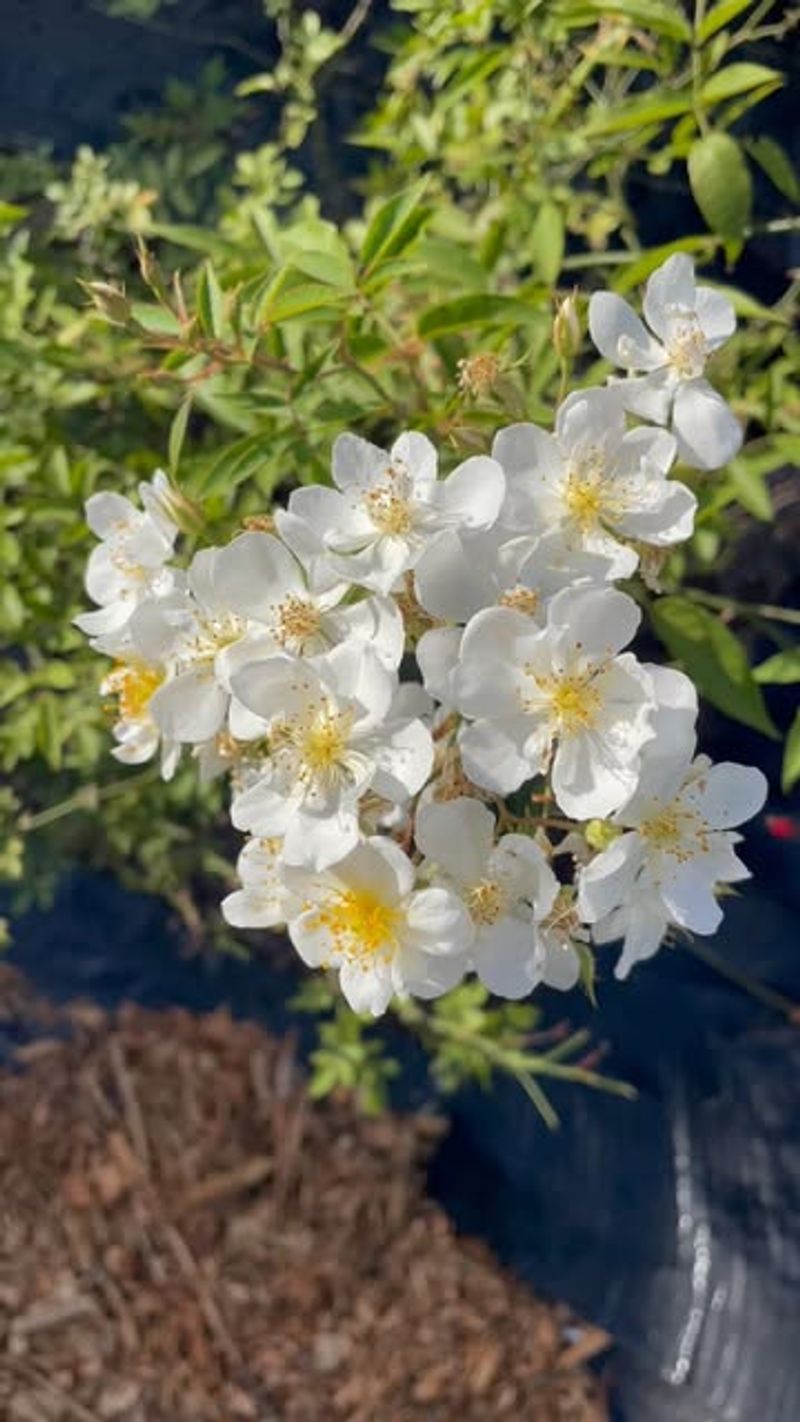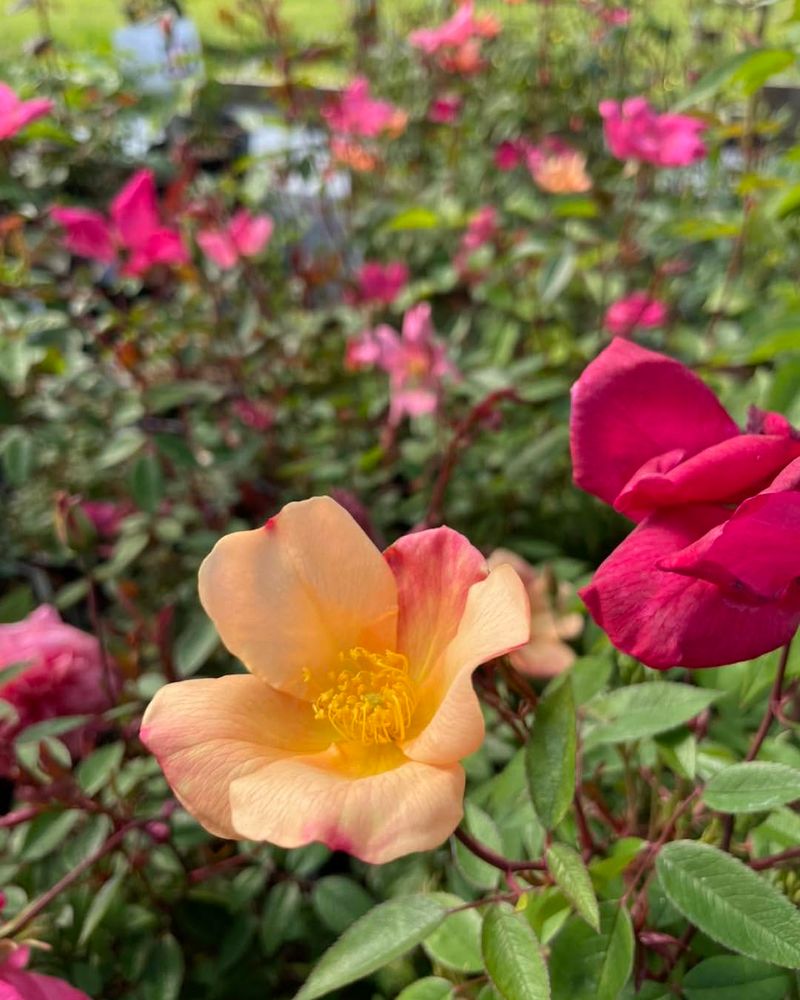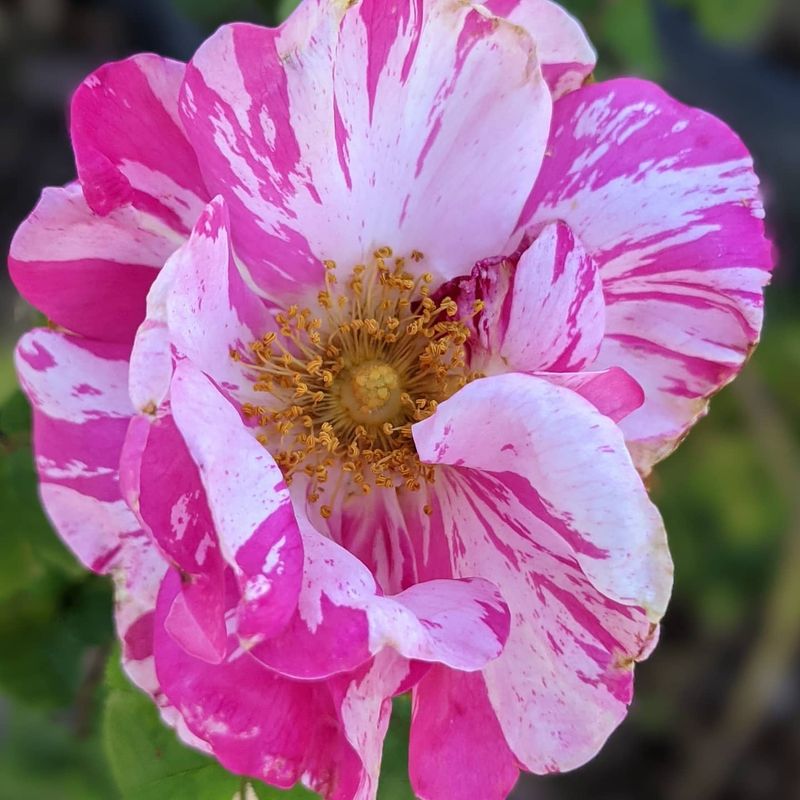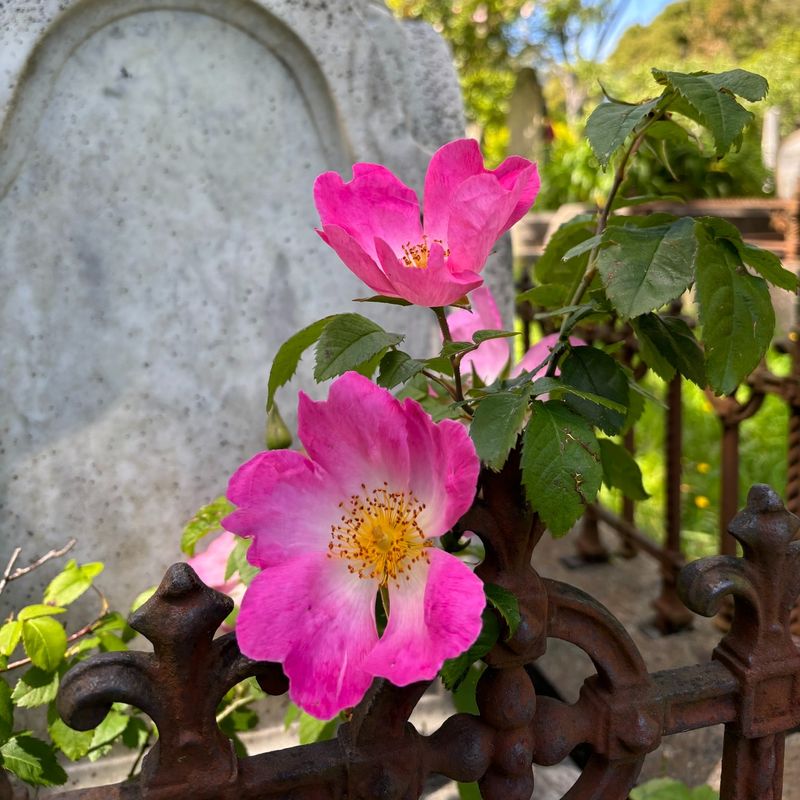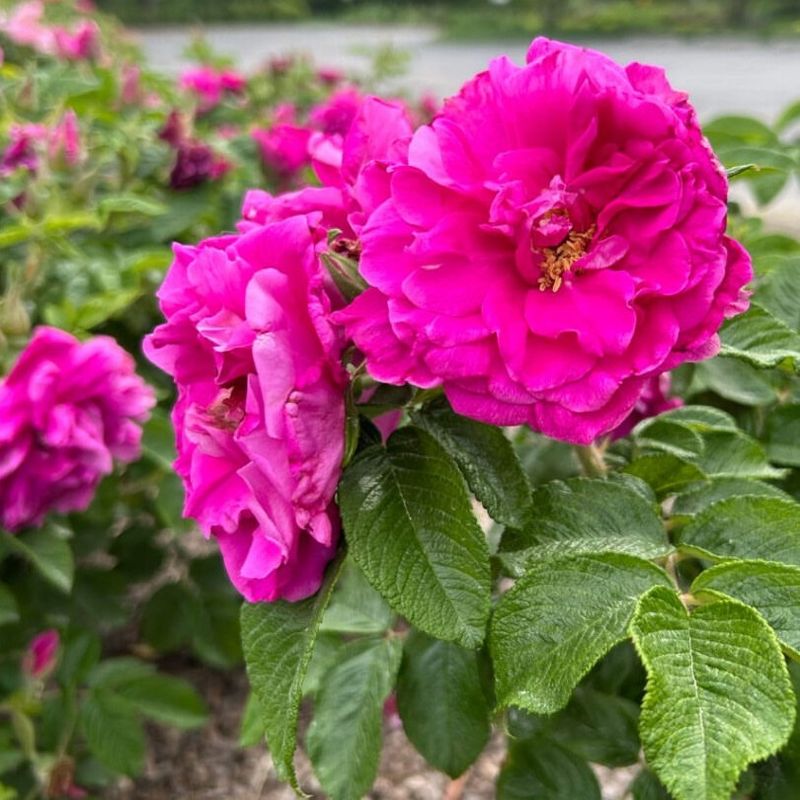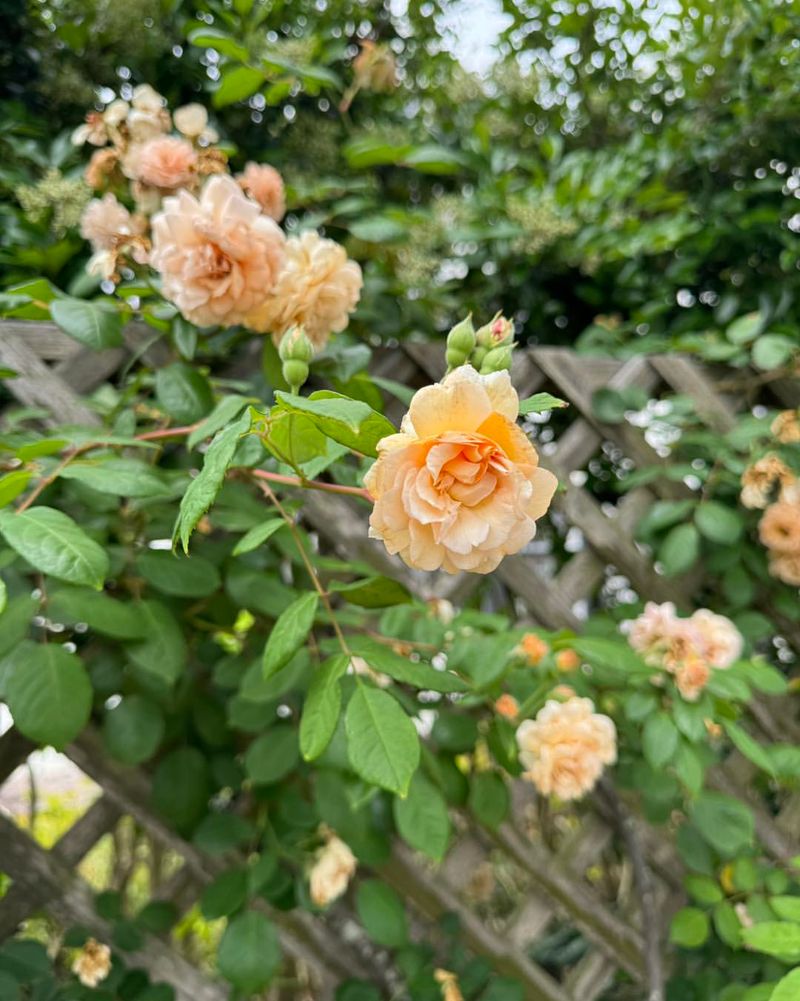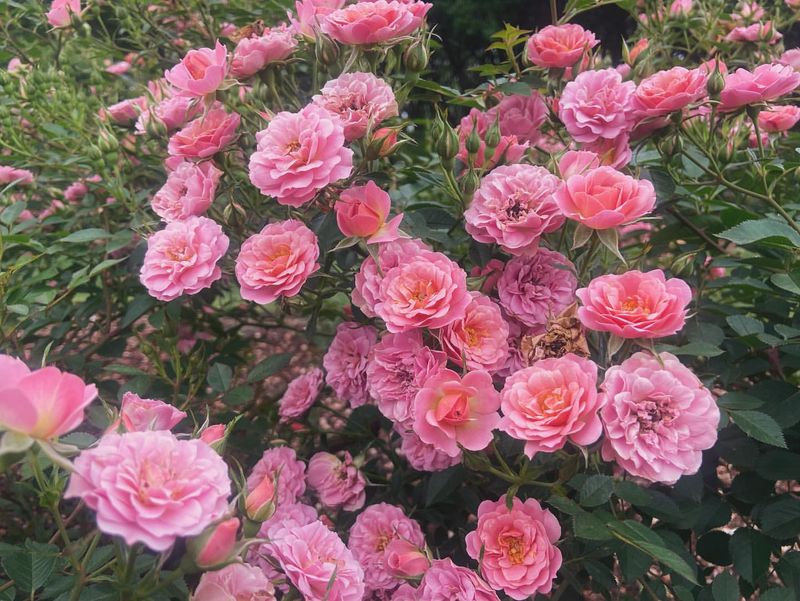Roses aren’t just for looks—they’re like magnets for bees, butterflies, and all kinds of pollinators that keep your garden buzzing with life. I’ve picked out 20 stunning rose varieties that these little visitors absolutely adore.
Growing them is easier than you might think, and watching the pollinators flock to your blooms is seriously addictive. With a few simple tips, you can turn your garden into a pollinator paradise.
Get ready for a garden full of color, life, and sweet buzz-worthy moments!
1. Wild Rose (Rosa rugosa)
Simple, open-faced flowers with easily accessible pollen make this rose a pollinator paradise. Its fragrant blooms come in shades of pink, white, and red, appearing from early summer through fall.
Plant in full sun with well-draining soil and give it space – these can spread up to 6 feet wide. They’re remarkably salt-tolerant, making them perfect for coastal gardens.
2. Knockout Rose
Beloved for disease resistance and continuous blooming, Knockout roses offer pollinators a reliable food source all season. Their single-flowered varieties provide easier access to pollen than double-flowered types.
Give them 6-8 hours of sunlight daily in well-draining soil. Regular deadheading isn’t necessary, but light pruning in early spring helps maintain their compact, rounded shape.
3. Ballerina Rose
Dainty clusters of single pink flowers with white centers create a ballet-like appearance that’s irresistible to bees. This musk rose produces abundant blooms and gives off a light, sweet fragrance that attracts pollinators from afar.
Plant in rich, well-draining soil with full sun. Ballerina roses grow as medium-sized shrubs reaching about 4 feet tall, making them perfect for the middle of mixed borders.
4. Rugosa Alba
Crisp white flowers with prominent yellow stamens make this rose a beacon for pollinators. The blooms give way to large, bright orange-red hips in fall that provide food for birds long after flowering has finished.
Hardy in zones 3-9, this tough rose tolerates poor soil and coastal conditions. Its naturally disease-resistant foliage has a pleasantly crinkled texture, adding interest even when not in bloom.
5. Lady of Shalott
Apricot-orange blooms with yellow undertones offer a warm welcome to passing pollinators. This David Austin rose combines old-fashioned charm with modern disease resistance and a rich tea fragrance that attracts bees.
Grows best in fertile, well-draining soil with at least 6 hours of sun. Its arching growth habit reaches about 4 feet tall and wide, making it suitable for both borders and large containers.
6. Kew Gardens
Masses of small, single white flowers resemble a flowering shrub more than a traditional rose. The open flower structure with easily accessible stamens makes this variety a pollinator magnet throughout its long blooming period.
Plant in full sun to light shade in well-draining soil. This David Austin rose forms a large, arching shrub up to 4 feet tall that looks spectacular when allowed to grow naturally without heavy pruning.
7. Nearly Wild
Single pink flowers with prominent yellow centers bloom continuously from spring until frost. The simple, open structure allows easy access for bees, butterflies, and other beneficial insects looking for nectar and pollen.
Hardy and disease-resistant, this rose thrives in full sun and adapts to various soil types. Its compact growth habit (2-3 feet tall) makes it perfect for front borders or mass plantings in pollinator gardens.
8. The Generous Gardener
Pale pink, loosely double flowers don’t hide their pollen-rich centers from hungry visitors. This climbing rose produces a delicious Old Rose fragrance with notes of musk that attracts bees from surprising distances.
Train on a trellis or fence in a sunny spot with fertile soil. Reaching 10-12 feet tall, it makes a spectacular flowering wall when established, creating a vertical feeding station for pollinators.
9. Rosa Glauca
Small, single pink flowers contrast beautifully with distinctive blue-gray foliage that gives this rose its name. The simple blooms transform into abundant red hips in fall, providing food for birds and visual interest.
Grows naturally as a large shrub up to 6 feet tall in full sun to part shade. This species rose needs minimal care once established and won’t mind poorer soil conditions where other roses might struggle.
10. Golden Celebration
Large, cupped golden-yellow blooms offer a rich fruity fragrance that pollinators find irresistible. While fuller than some pollinator favorites, the flowers open wide enough for bees to access the central stamens.
Plant in rich, well-draining soil with at least 6 hours of sunlight. This David Austin rose forms a rounded shrub about 4 feet tall and wide, making it a sunny focal point in mixed borders.
11. Therese Bugnet
Fragrant pink blooms appear earlier than most roses, providing an important early-season food source for pollinators. This tough rugosa hybrid continues flowering intermittently throughout summer on attractive red stems.
Exceptionally cold-hardy (to zone 3), it grows as a large shrub up to 6 feet tall. The red canes provide winter interest, while its disease resistance means no chemical sprays that might harm beneficial insects.
12. William Baffin
Clusters of semi-double deep pink flowers bloom profusely in early summer, with lighter repeat flowering until frost. This Canadian Explorer rose offers accessible centers where pollinators can easily reach pollen and nectar.
Extremely cold-hardy and disease-resistant, it can be grown as a climber (8-10 feet) or allowed to form a large shrub. Its flexibility and toughness make it perfect for challenging garden spots.
13. Sally Holmes
Large clusters of single, creamy-white flowers with golden stamens attract a diverse range of pollinators. This rose produces an abundance of blooms in late summer when many other flowers are finishing their display.
Grows as a large shrub or small climber (6-8 feet) in full sun to light shade. Its nearly thornless stems make maintenance easier, while its disease resistance means healthier plants without chemical interventions.
14. Darlow’s Enigma
Clouds of small, single white flowers with prominent yellow stamens bloom continuously from spring until hard frost. This musk rose hybrid produces a sweet, spicy fragrance that draws pollinators from throughout the garden.
Can be grown as a large shrub or trained as a climber reaching 6-8 feet. Its exceptional disease resistance and vigor make it perfect for organic gardens where pollinator health is a priority.
15. Mutabilis
Single flowers change color as they age – opening yellow, turning pink, then crimson – creating a butterfly-like effect. Also known as the Butterfly Rose, its simple, open structure provides easy access for a variety of pollinators.
Grows as a large shrub (up to 6 feet) in warm climates (zones 7-10). This antique Chinese rose blooms continuously in warm weather and requires minimal pruning to maintain its naturally graceful form.
16. Rosa Mundi
Semi-double striped flowers in pink and white create a candy-cane effect that’s as appealing to pollinators as it is to gardeners. This ancient Gallica rose dates back to the 12th century and offers accessible pollen despite its semi-double form.
Blooms once in early summer but with spectacular effect. Plant in full sun to light shade in well-draining soil, where it will form a compact shrub about 3 feet tall and wide.
17. Complicata
Large, single bright pink flowers with golden centers create a dramatic display that draws in bees and butterflies. This species rose blooms once in early summer but with such abundance that it becomes a pollinator banquet.
Can be grown as a large shrub or trained as a climber reaching 8-10 feet. Its vigorous nature and disease resistance make it suitable for naturalistic plantings where it can spread comfortably.
18. Hansa
Richly fragrant, semi-double magenta-red flowers attract pollinators with both their accessible structure and intense scent. This rugosa hybrid blooms repeatedly throughout summer and produces large, edible rose hips in fall.
Exceptionally hardy (to zone 3) and disease-resistant, it grows as a medium-sized shrub about 4 feet tall. Its wrinkled, glossy foliage adds textural interest and remains attractive even when not in bloom.
19. Buff Beauty
Apricot-yellow blooms with a strong honey fragrance create an irresistible attraction for bees. This Hybrid Musk rose produces clusters of semi-double flowers that open fully to reveal their pollen-rich centers.
Forms a medium to large shrub (4-6 feet) that can also be trained as a small climber. Plant in full sun to partial shade in rich, well-draining soil for best flowering and repeat bloom throughout summer.
20. The Fairy
Clusters of small, double pink flowers might not seem pollinator-friendly, but their shallow structure allows access to central stamens. This polyantha rose blooms continuously from summer until frost, providing a reliable food source.
Forms a low, spreading shrub (2-3 feet tall, 4 feet wide) that works beautifully as a flowering ground cover. Disease resistance and adaptability to various conditions make it an easy-care addition to pollinator gardens.

